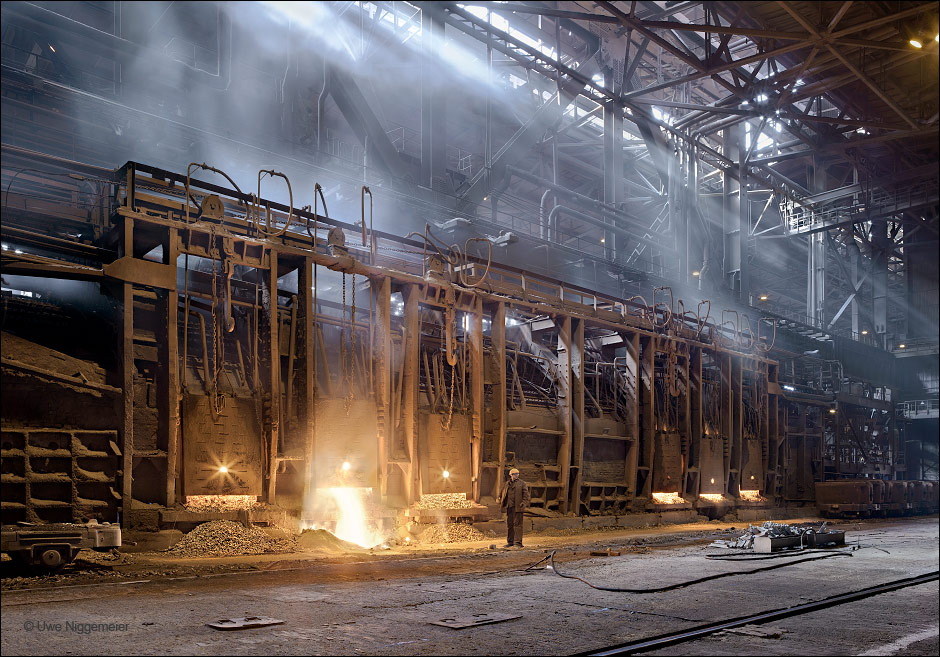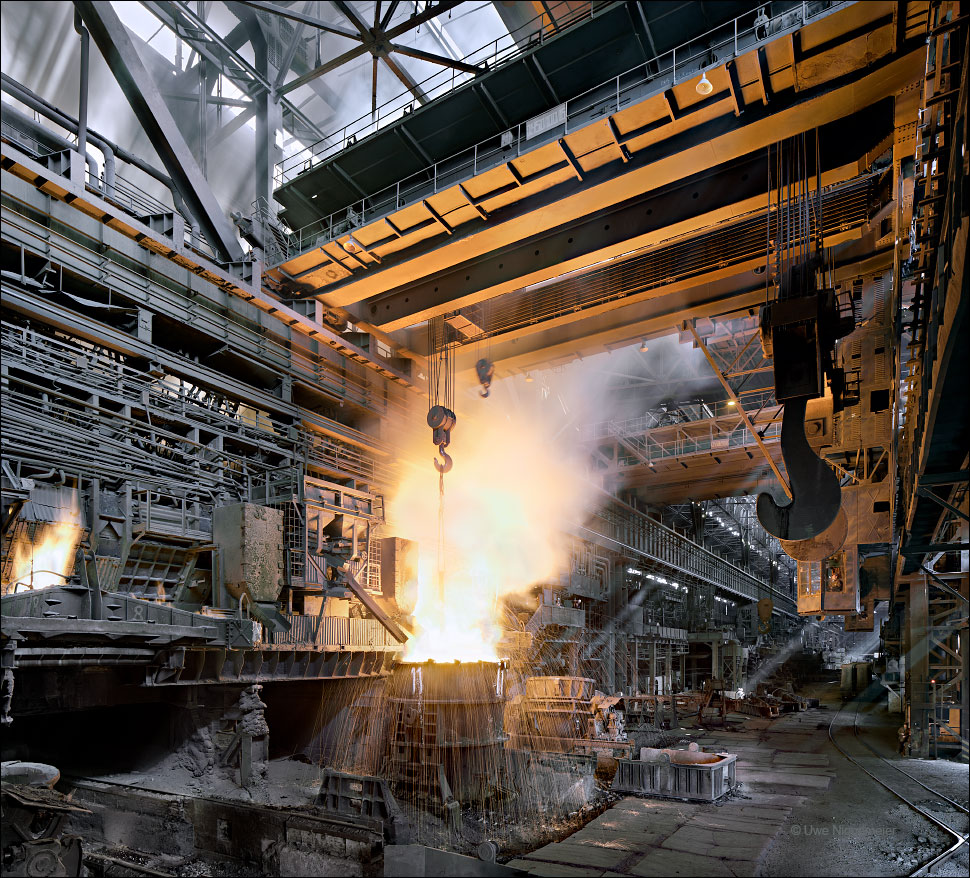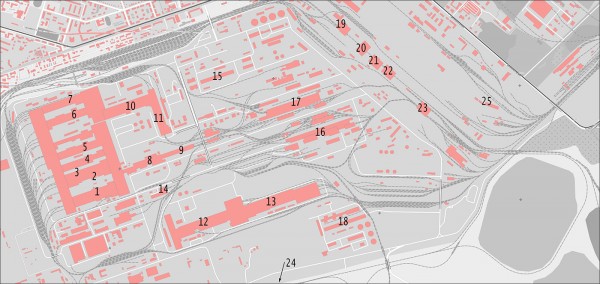Dneprovskiy Dzerzhinskiy Metalurgical plant, Dneprodzerzhinsk, Ukraine. 2012.

Tag Archives: Ukraine
DMKD, Ukraine
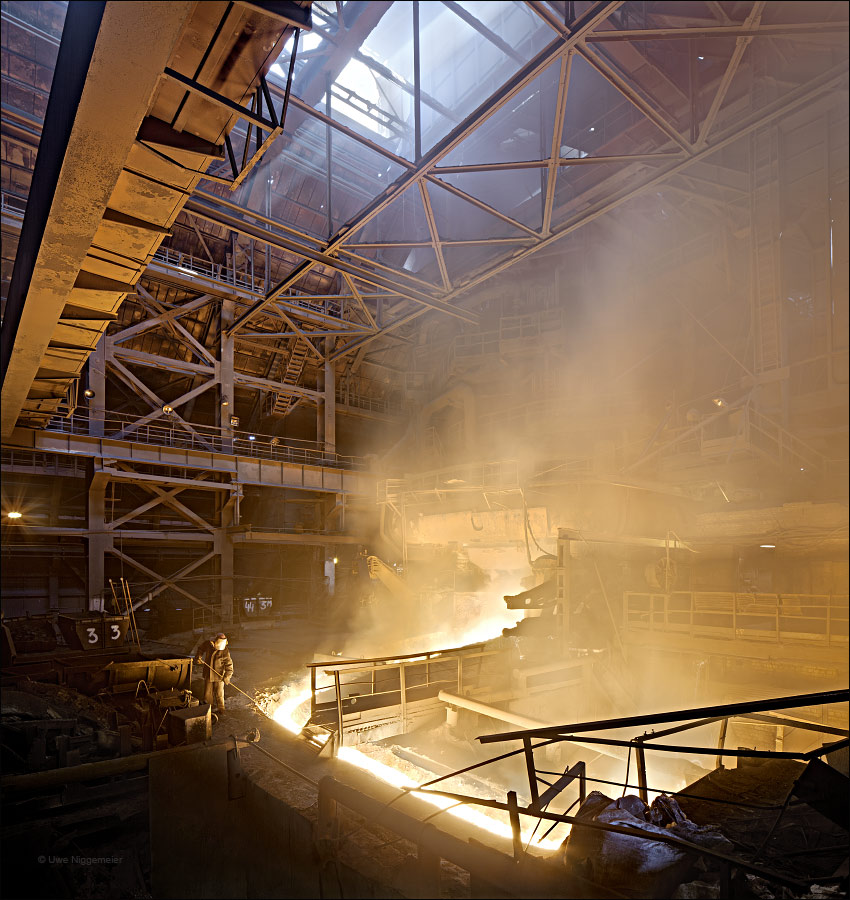
The steel plant in Dneprodzerzhinsk was founded in 1887 on the banks of Ukraine’s largest river the
Dnepr supplied with coal from the Donezk bassin and iron ore from Krivoy Rog. The mill was nationalized in 1917 and named after Feliks Dzierżyński (Revolutionary and founder of the Sowjet secret police) in 1925.
Today the plant is privatized and runs four blast furnaces (No. 1/8/9/12) a BOF shop including two 250 ton top blown vessels. Two continuous casters and several rolling mills for railroad axles, rails, billets, tube blanks, medium sections and sheet pile.
Images now at Stahlseite.
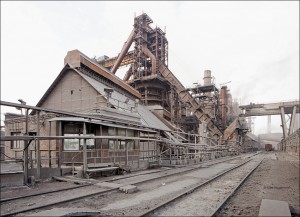
ArcelorMittal Closes It’s Last Open Hearth Furnace
AM Krivoy Rog, Ukraine announced to close it’s last open hearth furnace as soon as the modernization of BOF vessel No. 5 is finished. This will probably happen in late 2014.
The 700 ton tandem open hearth furnace No. 6 is the last of it’s kind at ArcelorMittal, the worlds’s largest steel producer.
Further images.
700 Ton Open Hearth Furnace
The steel mill in Kryvyi Rih (Russ. Krivoy Rog) was founded in 1931 on the rich iron or deposits of the Ukrainian Kryvbas basin.
In 1934 the mill was ready to produce hot metal out of one blast furnace. By 1939 three blast furnaces a coke plant and a Bessemer shop were in operation. In the second world war the Kryvyi Rih Metallurgical Works were dismantled by the Soviets and the remains destroyed by the German army.
In 1949 blast furnace No.1 was blown on. By 1960 four rolling mills and a 600 ton open hearth furnace were installed.
Blast furnace No.7 was built in 1962, No. 8 and No. 9 (one of the largest worldwide) followed in 1970 and 1974.
In 1996 the Kryvyi Rih State Mining and Metallurgical Combine (Krivorizhstal) brought together the metallurgical and the mining activities in the Kryvbas basin.
In 2004 the mill was privatized for the first time to an Ukrainian syndicate.
This was canceled one year later and the second privatisation found the Mittal Steel company as a new owner.
Since 2007 Krivorizhstal is part of the worlds largest steel company ArcelorMittal.
Today ArcelorMittal Kryvyi Rih employs 35000 people main products are billets, bars, rod and wire.
Further viewing.
1: Light-section mill 250-2
2: Rod mill 150-1
3: Light-section mill 250-1
4: Light-section mill 250-3
5: Light-section mill 250-4
6: Light-section mill 250-5
7: Rod mill 250-3
8: Blooming mill No.1
9: Soaking pits
10: Blooming mill No.2
11: Soaking Pits
12. Light-section mill 250-6
13: Wire mill
14: Forge shop
15: Oxygen plant
16: BOF shop (6×160 ton)
17: Open hearth shop (1×550 ton, 1×700 ton)
18: Power station
19: Blast furnace No.8
20: Blast furnace No.7
21: Blast furnace No.6
22: Blast furnace No.5
23: Blast furnace No.1
24: Blast furnace No.9
25: Coke plant (6 batteries)
Donetskstal, the last days of Siemens-Martin
The video shows the Donetskstal open hearth shop a few days before it was closed down for good in April 2012.
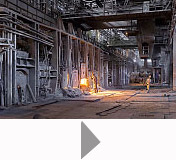 Donetskstal was founded in 1870 by the Welsh engineer John Hughes.
Donetskstal was founded in 1870 by the Welsh engineer John Hughes.
Most installations were imported from England and iron production in one blast furnace started in 1872.
By 1910 the plant had 6 blast furnaces, 9 open-hearth furnaces, 2 Bessemer converters, blooming, rail, structural, sheet, and some section rolling mills and a a coking plant.
From 1928 to 1961 the mill was named Stalino Iron Works.
In 1953 the 2300mm plate mill was installed which is still in use today.
Blast furnace 1 was built in 1956,NO 2 one year later. Both where completly modernised in 2002 and 2006.
One of the first continuous casters worlwide was built in 1960.
Two blast furnaces and several pig iron casters are actually producing.
More inside views.

